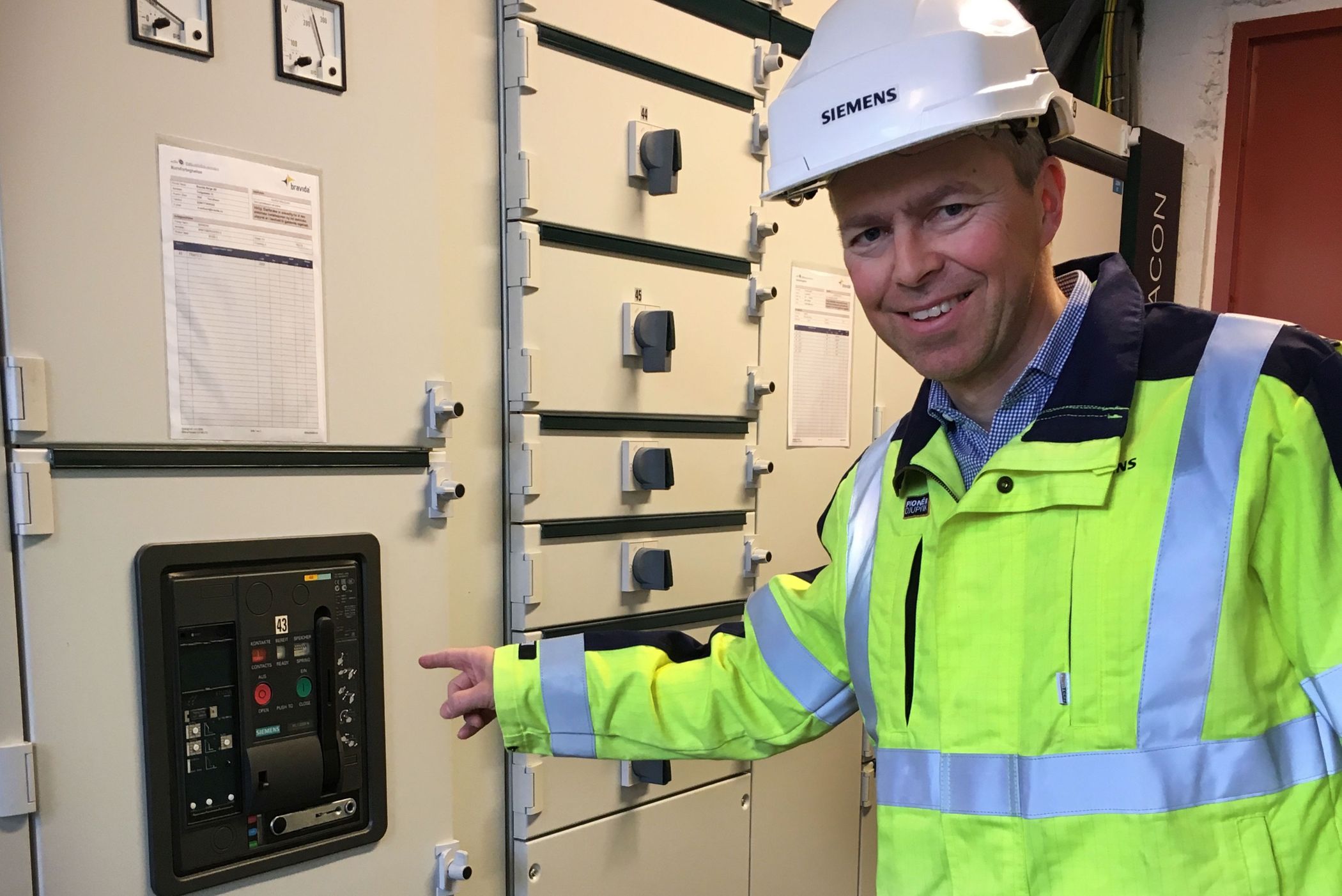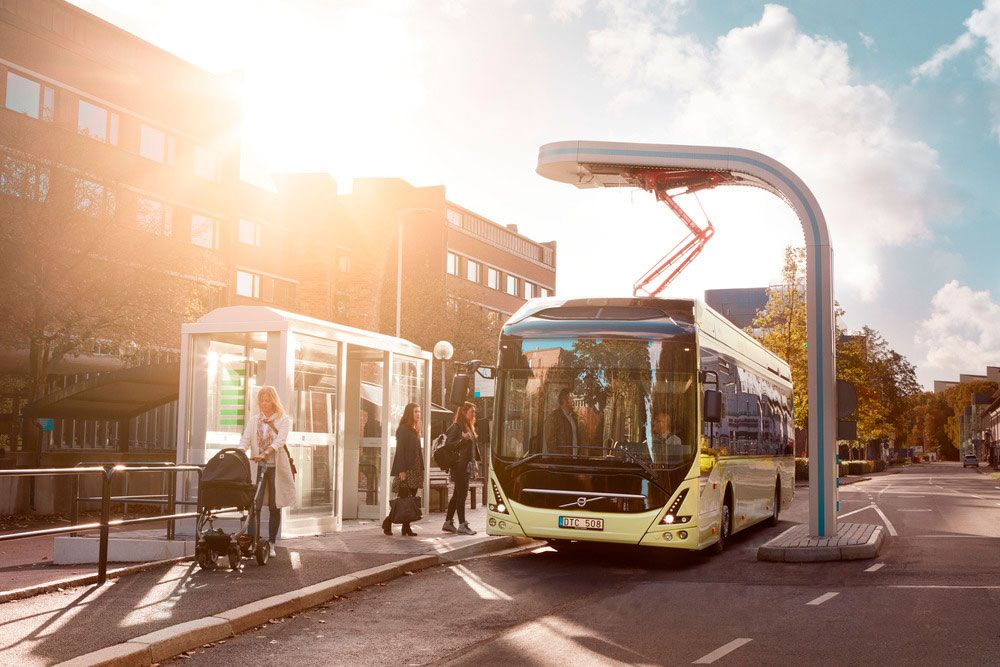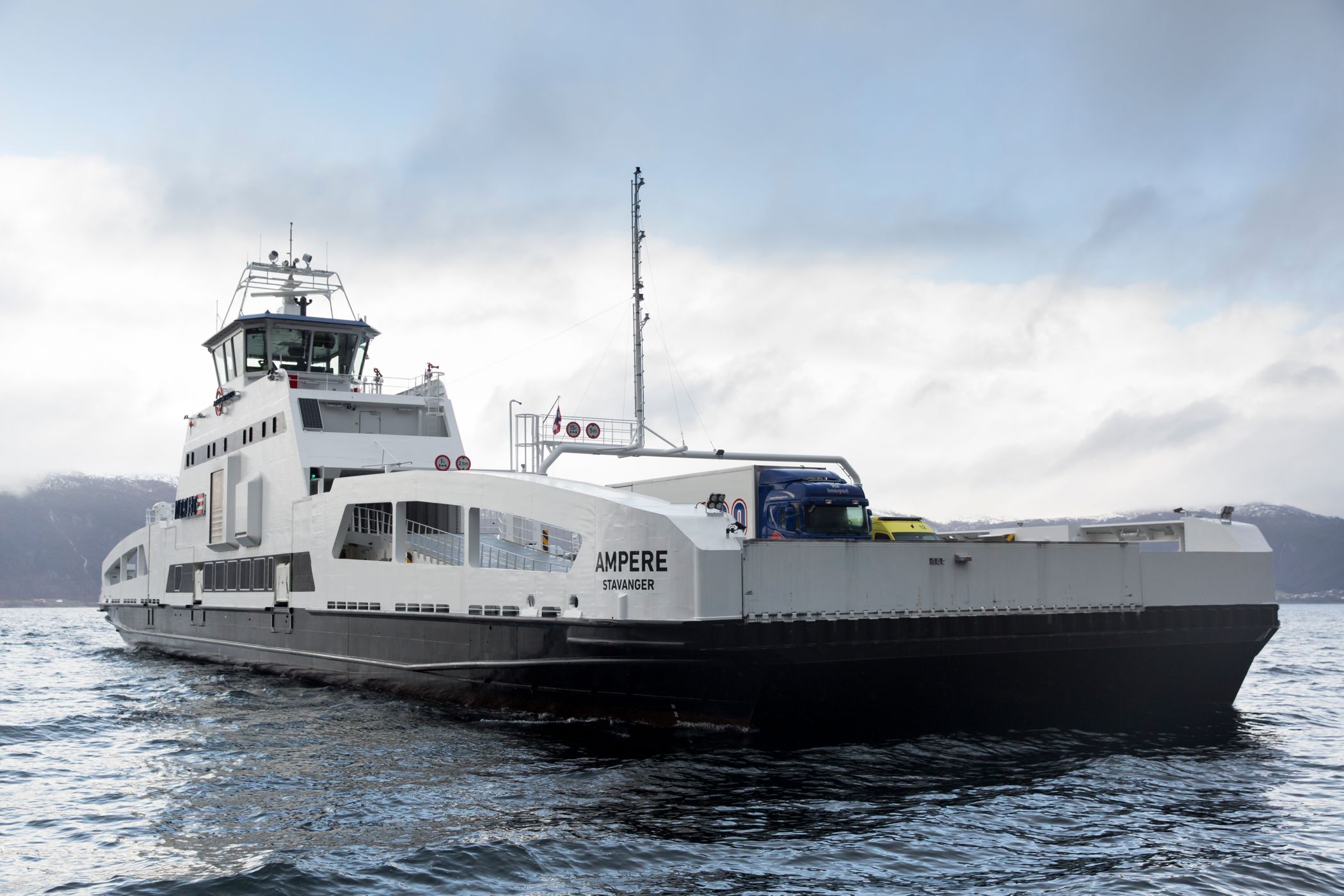Danger of ‘traffic jams’ in
the power grid
Capacity limitation means that we will have to choose between more pylons or smarter power consumption.
The expanding electrification of Norway, including electric cars, electric buses and electric ferries, means that in many places we won’t have enough capacity for everyone to charge batteries at the same time.
But the solution is not always simply to add ever-more power cables.
“We can view the power grid as a motorway. During 80-90 percent of the day, you can do just fine with two lanes, but during rush hour you’ll require eight lanes," explains Andreas Lien of Siemens.
“A better option is to use the ‘road’, or the power grid, smarter all day long so you can distribute ‘traffic’ evenly. Here, there are many good solutions.”
Own island network
Along the Norwegian coasts, electric ferry routes are being established, and more and more charging stations are being built for electric cars. At the same time, expensive sea cables are approaching their replacement age and timely upgrade. The power company Trønder Energi Nett is closely monitoring developments. Perhaps there are other solutions than investment in new cables?
“As an example, we now see the opportunity of establishing a so-called micro-grid on a small island that is currently powered by a sea cable. Micro-grids are power grids that can work independently without connecting to the main power grid,” says Arnt Magnar Forseth, Operations Manager.

Andreas Lien from Siemens believes we can use the grid smarter. Photo: Siemens
Power production is generated locally and can come from wind, solar power or hydrogen.
“Should local production not be sufficient, power can be stored in one or more batteries for later use. That way, we can deliver the electricity the island needs without replacing the sea cable,” says Forseth.
He believes this approach also has a number of other applications.
“Likewise, you might be able to deliver more power to an area in the city where the capacity is limited and where ground excavation costs [for cables] are high, or to new industrial areas or bus charging stations,” he says.
The goal is to supply power on the same quality level as today, while reducing the cost of investment and operation.

Siemens charging station. As more and more electric cars and buses fill the roads, our requirement for electricity will increase, not least during rush hours. Here, Siemens and Volvo show how buses can be charged in the future via a pantograph at the bus stop. Photo: Siemens / Volvo Busar AB
Digital management is key to solutions
The way we use power and new technology can be part of the solution. Imagine electric cars in all garages, electric buses that need to charge after rush hour and induction ovens in all kitchens. It’s noon. Some people may even have programed their washing machine to finish when they return home from work – and they have plugged in all kinds of home gadgets.
“Electric car manufacturers do not have high thoughts about the capacity of the power grid. To them, it’s a matter of delivering the fastest possible load. That requires a lot of power at once, which means that the consumption peaks will be much higher than today,” says Andreas Lien from Siemens, when talking about intelligent charging stations and time-controlled hot water tanks.
The second major challenge is that you need a lot of power quickly, for example to charge a ferry in a port where until recently you only needed electricity from the grid for the floodlights.
Examples are places that used to be outposts with a small shop and very low power consumption, but suddenly have become a stopover for an electric ferry. These facilities place high demands on the power grid that are not adapted to such a large load.
“New technologies are constantly evolving that change the need of network companies for investment. The requirements of electric ferries can, for example, be delivered using smart technology that draws more electricity from the network,” says Andreas Lien.

In Sognefjorden, the electric ferry ‘MS Ampere’ already travels silently across the fjord. Photo: Siemens
Siemens is now drawing on all their experience in the regions of Norway. Specially developed programmes analyse the future needs of different power sources – in alternative scenarios.
“The idea is that you should be able to optimise the use of online and alternative sources, and spend less money overall.”
These challenges also provide new jobs. In order to accommodate the need for electrification in a maritime environment, Siemens has established its own battery plant in Trondheim. The factory will specialise in local energy systems in the maritime sector and the interaction with other local power grids.
Carrot and stick
The distribution of power is already a policy issue. While incentives are given in the form of support for local power sources, such as solar cells on buildings and geothermal heating, disincentives are also being devised. The Norwegian Water Resources and Energy Directorate, NVE, is working on identifying different models that will provide incentives to maintain an even consumption, while meeting the needs for charging and the integration of variable renewable energy sources.
“There will definitely be a higher tariff for electricity supplied during rush hour when the network tariff agreement is to be amended sometime before 2021,” says Lien.
Rush hour electricity tariffs are already being tested. During the pilot project, a sports team in the Østfold county received a huge extra bill for the use of floodlighting during the most expensive tariff period.
“The change can be a tough learning process for some, so it’s important to ensure good communication between customers and network owners. It won’t stop people playing football. Rather, it will help people change their energy needs in other ways,” says Lien.